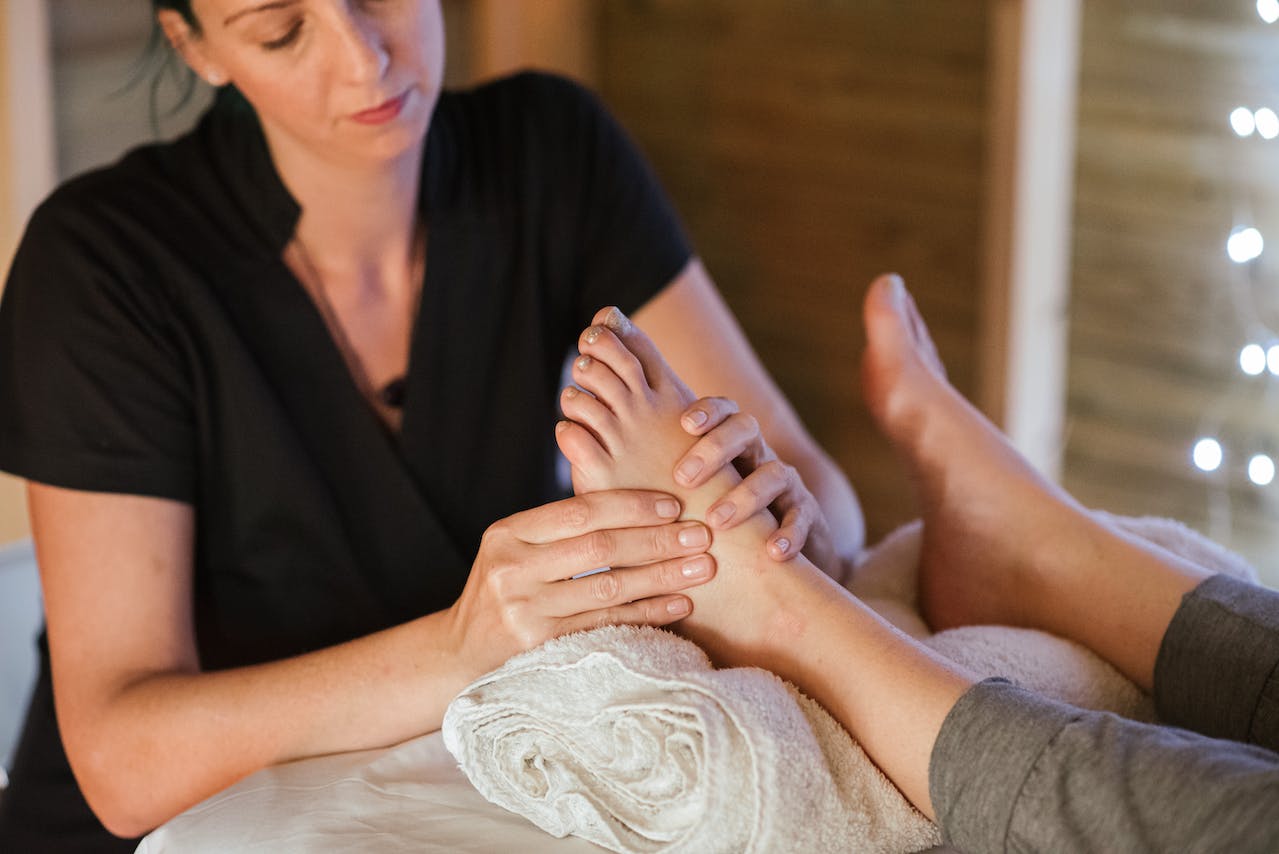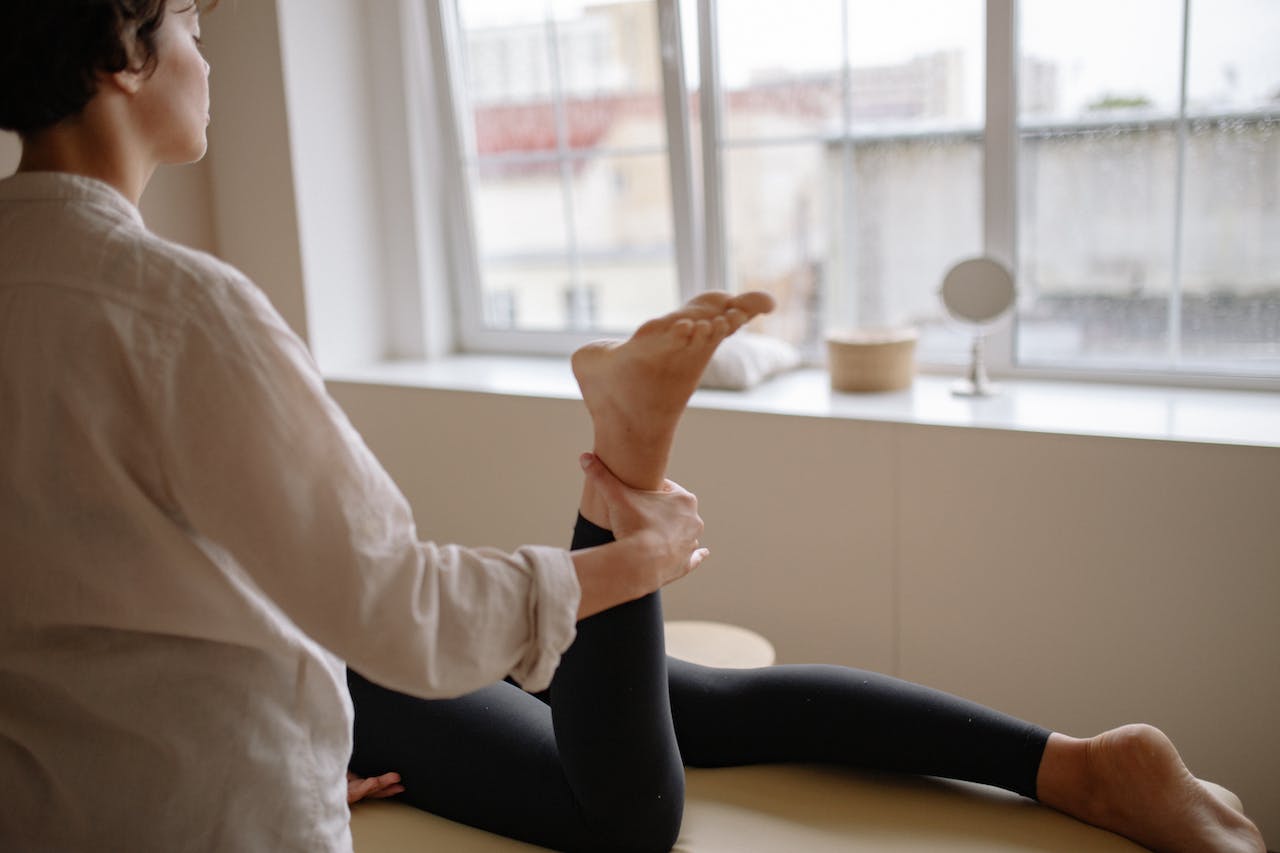Looking to understand the contrast between Tui Na massage and traditional massage? Both bodywork and studies offer relaxation and therapeutic benefits, but their methods diverge significantly. While traditional massage focuses on muscle manipulation and tissue kneading, Tui Na employs rhythmic compression techniques along energy channels to realign the body’s energy flow.
By examining their differences in pressure application, stretching techniques, and underlying philosophies, and use, you’ll gain a comprehensive understanding of how these modalities differ in addressing various physical ailments.
Origins And Philosophy Of Tui Na Massage
Principles And Origins
Tui Na massage has its roots in ancient China, forming an integral part of Traditional Chinese Medicine (TCM). This therapeutic practice is deeply ingrained in the principles of Qi, the body’s vital energy, and the meridian system. The fundamental philosophy behind Tui Na revolves around restoring balance and harmony to the body’s energy flow.
Originating from China, Tui Na massage aligns with Traditional Chinese Medicine (TCM) principles. It focuses on balancing Qi and harmonizing the body’s energy flow through manipulation techniques.
In contrast, traditional massages are rooted in various cultural practices worldwide. While they may also aim to alleviate tension or promote relaxation, they do not necessarily adhere to the specific energetic principles of TCM.
Traditional massages are diverse across cultures but generally lack a focus on Qi or meridian systems as seen in Tui Na massage. They primarily concentrate on physical manipulation for relaxation or relief.
Techniques And Approaches
Tui Na employs a unique set of techniques that involve deep tissue manipulation, acupressure points stimulation, and joint mobilization. These methods target specific areas related to the body’s meridians to address imbalances in Qi flow effectively.
The techniques used in Tui Na include deep tissue manipulations targeting meridian points for holistic healing aligned with TCM principles.
Conversely, traditional massages encompass a wide range of approaches such as Swedish massage, aromatherapy massage, hot stone therapy, among others. These methods mainly center around kneading muscles and applying pressure for relaxation purposes without focusing on energetic pathways like those addressed by Tui Na.
Traditional massages encompass various modalities like Swedish or hot stone therapy that prioritize muscle relaxation rather than addressing energetic imbalances.
Techniques Unique To Tui Na Massage
Hand Techniques
Tui Na massage involves a wide range of hand techniques such as brushing, kneading, and rolling. These methods are used to manipulate the soft tissue of the body, providing relief from muscle tension and promoting relaxation. By utilizing these diverse hand movements, Tui Na practitioners can address various areas of discomfort or tension in the body.
Acupressure And Stretching
One distinctive feature of Tui Na massage is its incorporation of acupressure and stretching techniques. Acupressure involves applying pressure to specific points on the body to stimulate healing or alleviate pain. In Tui Na massage, this method is combined with targeted stretching to focus on particular acupoints and meridians within the body. This approach allows for a more precise treatment tailored to individual needs.
Tui Na massage also emphasizes deep tissue manipulation and joint mobilization as part of its technique repertoire. The emphasis on deep tissue work enables practitioners to reach underlying layers of muscles and connective tissues, aiding in addressing chronic pain or musculoskeletal issues effectively.
Traditional Massage Practices And Approaches
Varying Techniques
Traditional massage encompass a wide array of techniques that differ across various cultures and regions. These approaches typically prioritize promoting relaxation, relieving stress, and releasing muscle tension. For instance, Swedish massage involves long strokes and kneading to ease muscle tension and improve circulation. Thai massage incorporates yoga-like movements to stretch the body and enhance flexibility. Ayurvedic massages focus on using specific oils and manipulation techniques to promote wellness.
These traditional methods often involve targeting specific pressure points or areas of the body where blockages may occur, aiming to release any accumulated tension or energy stagnation. By applying different manipulation techniques, these massages aim to enhance overall health by improving circulation, reducing stress levels, and promoting a sense of well-being.
Cultural Significance
The diverse range of traditional massages reflects their cultural significance in addressing physical discomforts while also nurturing mental tranquility. For example, Tui Na massage from China combines principles from Traditional Chinese Medicine (TCM) with targeted manipulation techniques aimed at restoring balance between yin and yang energies within the body. Similarly, Ayurvedic massage is deeply rooted in Indian culture’s holistic approach towards achieving optimal health through balancing mind-body connections.
In contrast to modern scientific studies exploring the effectiveness of various bodywork practices such as Tui Na massage or Swedish massage in treating specific conditions like chronic pain or anxiety disorders; traditional massages have been passed down through generations as part of customary wellness practices without relying heavily on empirical research findings for validation.
Key Differences Between Tui Na And Traditional Massage
Energy Flow And Muscle Manipulation
Tui Na focuses on the body’s energy flow by targeting specific acupoints, while traditional massage primarily concentrates on muscle manipulation. This means that Tui Na aims to regulate the flow of energy throughout the body, promoting overall wellness, while traditional massage mainly works on relieving muscle tension and promoting relaxation.
For example, in a traditional Swedish massage, therapists use various techniques such as kneading and long strokes to manipulate muscles and improve blood circulation. On the other hand, a Tui Na practitioner might apply pressure to specific acupoints or perform stretching techniques to balance the body’s energy.
Principles Of Traditional Chinese Medicine (TCM) VS. Cultural Influences
Incorporating principles of Traditional Chinese Medicine (TCM) is a key aspect of Tui Na therapy. This means that Tui Na practitioners may consider factors such as meridians, Qi (vital energy), Yin and Yang balance when assessing their clients’ conditions. In contrast, traditional massage draws from a variety of cultural influences which may not necessarily include TCM principles.
For instance, some forms of traditional massages like Thai massage incorporate elements from yoga postures along with Ayurvedic practices originating from India. These techniques focus on improving flexibility and releasing blockages in the body’s energy lines but do not specifically adhere to TCM principles like those found in Tui Na.
Specialized Approach VS. Broad Techniques
Tui Na involves a more specialized approach, targeting specific issues or imbalances within the body based on an individual’s unique constitution according to TCM principles. Conversely, traditional massages typically employ broader techniques for general relaxation or addressing common muscle tension areas without focusing on individual constitutional differences.
In practical terms, this means that if someone seeks relief for chronic headaches using Tui Na therapy, a practitioner would likely target acupoints related to headache relief along with incorporating specialized manipulations catered towards addressing underlying causes based on their assessment according to their understanding of Qi flow through meridians.
Health Benefits Specific To Tui Na Therapy
Alleviating Chronic Pain Conditions
Tui Na massage therapy has been found to be effective in alleviating chronic pain conditions such as arthritis and fibromyalgia. This type of massage focuses on specific pressure points, joint manipulation, and muscle stimulation to target the root cause of the pain. For individuals suffering from arthritis or fibromyalgia, Tui Na therapy can provide relief by releasing tension in the muscles and promoting better blood flow.
In addition to targeting specific areas of discomfort, Tui Na therapy also works towards improving overall well-being by addressing the underlying issues that contribute to chronic pain. By stimulating key acupressure points and applying specialized techniques, this form of massage can offer long-term relief for those dealing with persistent pain conditions.
Improving Circulation And Reducing Inflammation
One of the benefits associated with Tui Na therapy is its ability to improve circulation throughout the body while simultaneously reducing inflammation. The targeted manipulation techniques used during a Tui Na session help stimulate blood flow, which aids in delivering essential nutrients and oxygen to various tissues and organs. As a result, this improved circulation can lead to reduced inflammation in affected areas.
By focusing on specific pressure points linked with circulatory function, Tui Na therapists are able to address any blockages or imbalances within the body’s energy pathways (meridians). This approach not only helps alleviate localized inflammation but also contributes to an overall sense of relaxation and comfort.
Supporting Digestive Health
Another noteworthy benefit offered by Tui Na therapy is its potential impact on digestive health. Through targeted abdominal massages and acupressure techniques, practitioners aim at relieving symptoms related to gastrointestinal disorders such as bloating, indigestion, or constipation.
The gentle yet precise manipulations applied during a Tui Na session work towards regulating digestive functions by promoting better organ function and relieving tension within the abdominal area. These specialized techniques may help reduce stress-related digestive issues by fostering a state of deep relaxation throughout the body.

Managing Musculoskeletal And Chronic Disorders With Tui Na
Effective Treatment For Musculoskeletal Issues
Tui Na massage therapy is highly effective in addressing chronic neck pain, back discomfort, and joint stiffness. By applying targeted pressure to specific areas of the body, Tui Na can alleviate muscle tension and promote relaxation. This technique targets the yin and yang aspects of the body, aiming to restore balance and harmony within the muscles.
Tui Na’s focus on manipulating soft tissue makes it particularly beneficial for individuals experiencing persistent musculoskeletal issues such as chronic neck pain or recurring back discomfort. For instance, if someone suffers from chronic neck pain due to poor posture or muscle strain, Tui Na’s specialized techniques can help alleviate this condition by targeting the affected muscles directly.
In addition to its effectiveness in managing localized musculoskeletal issues, Tui Na also offers a holistic approach that takes into account the entire muscular system rather than just isolated areas of discomfort.
Managing Chronic Conditions
Apart from addressing immediate musculoskeletal concerns, Tui Na is also valuable for managing chronic conditions like carpal tunnel syndrome. This traditional Chinese therapy focuses on promoting healing through non-invasive methods that are especially beneficial for individuals dealing with long-term health challenges.
For those suffering from carpal tunnel syndrome—a painful illness caused by compression of a nerve in the wrist—Tui Na offers a gentle yet impactful treatment option. By focusing on improving blood circulation and relieving tension in affected muscles, this therapeutic method aids in reducing symptoms associated with carpal tunnel syndrome.
Moreover, individuals struggling with migraines or sciatica can benefit significantly from incorporating regular sessions of Tui Na into their wellness routine. The combination of targeted pressure points and gentle manipulation helps address these chronic conditions without relying solely on medication or invasive procedures.
Side Effects And Considerations In Tui Na Massage
Potential Side Effects
Tui Na massage, like any other form of therapy, may have some potential side effects. After a session, individuals might experience temporary soreness, bruising, or mild discomfort. These symptoms are usually short-lived and tend to subside within a few days. It’s important to note that these side effects are generally considered normal reactions as the body adjusts to the manipulation and pressure applied during the massage.
In some cases, individuals with certain health conditions should exercise caution when considering Tui Na therapy. For instance, those with fractures or severe osteoporosis may not be suitable candidates for this type of treatment due to its deep tissue manipulation techniques. Pregnant women should seek advice from a healthcare professional before undergoing Tui Na massage.
Practitioner Training And Safety
To ensure safe and effective application of Tui Na techniques, it is crucial for practitioners to be properly trained. This involves learning about the various hand techniques used in Tui Na therapy and understanding how they affect different parts of the body. Proper training also includes knowledge about contraindications and recognizing when it is not appropriate to perform certain manipulations on a client.
Moreover, trained practitioners will know how to modify their techniques based on an individual’s specific needs or health concerns. This adaptability can help prevent potential complications or adverse reactions during a session.
Choosing Between Tui Na And Traditional Massage For Specific Conditions
Individual Needs
When deciding between Tui Na massage and traditional massage, it’s crucial to consider your individual needs, preferences, and health goals. If you are seeking a treatment that targets specific health conditions or energy imbalances, Tui Na may be the more suitable option. On the other hand, if you simply want to relax, reduce stress, or relieve muscle tension without focusing on particular health concerns, traditional massage could be the better choice.
For example, if you suffer from chronic pain due to a specific condition such as arthritis or fibromyalgia, Tui Na massage might offer targeted relief by addressing the underlying energy imbalances associated with these conditions. However, if your primary aim is overall relaxation and stress reduction after a long week at work or intense physical activity like sports training, then a traditional massage would likely fulfill those needs effectively.
Health Goals
When considering different types of massages for addressing certain health concerns or achieving specific health goals such as pain management or improving flexibility in muscles and joints; it’s important to weigh their potential benefits against each other. For instance,Tui Na is known for its ability to target deep-seated issues related to chronic conditions through manipulation techniques that focus on restoring balance in the body’s energy flow. In contrast,traditional massage, while also offering some therapeutic benefits like improved blood circulation and muscle relaxation may not have the same level of specificity.
You’ve now gained a deeper understanding of the origins, techniques, and unique health benefits of Tui Na massage compared to traditional massage practices. The key differences between the two modalities have been highlighted, shedding light on how each can be beneficial for managing various conditions. As you consider choosing between Tui Na and traditional massage for specific health concerns, it’s essential to weigh the distinctive aspects and potential outcomes associated with each approach. Remember, the right choice ultimately depends on your individual needs and preferences.
Ready to experience the targeted therapy of Tui Na or explore the familiar comforts of traditional massage? Your journey to holistic wellness awaits – make an informed choice that aligns with your well-being goals.

Discover The Healing Power Of Tui Na Massage: Experience Wellness With Medicinevolution’s Expertise!
Are you struggling with the persistent discomfort of chronic pain, seeking solace from muscular tension, and in need of effective relief? MedicinEvolution is at the cutting edge of combining Tui Na massage techniques with holistic pain management, offering you revolutionary healing methods. By harnessing the ancient wisdom of Tui Na massage, MedicinEvolution targets the core sources of your muscular and joint pain, enabling a more thorough and impactful healing journey. Say goodbye to the limitations of muscle stiffness, chronic soreness, and the daily strain affecting your well-being—as MedicinEvolution delves into the art of Tui Na, guiding you toward significant recovery. Their specialized methods are crafted to transition you away from the relentless discomfort and physical challenges that have been compromising your life’s enjoyment.
If you’re dealing with ongoing muscle stiffness, joint pain, or the exasperating constraints of chronic discomfort, MedicinEvolution’s personalized approach, rooted in the traditional practices of Tui Na massage, is uniquely tailored to your specific needs. Don’t let the burden of physical pain narrate your life’s story—take the initiative and arrange your consultation with MedicinEvolution today! Begin a transformative journey with their Tui Na-based pain management techniques and start progressing towards a more dynamic, pain-free life. Your body and spirit, freed from the grip of pain, will undoubtedly feel rejuvenated!





